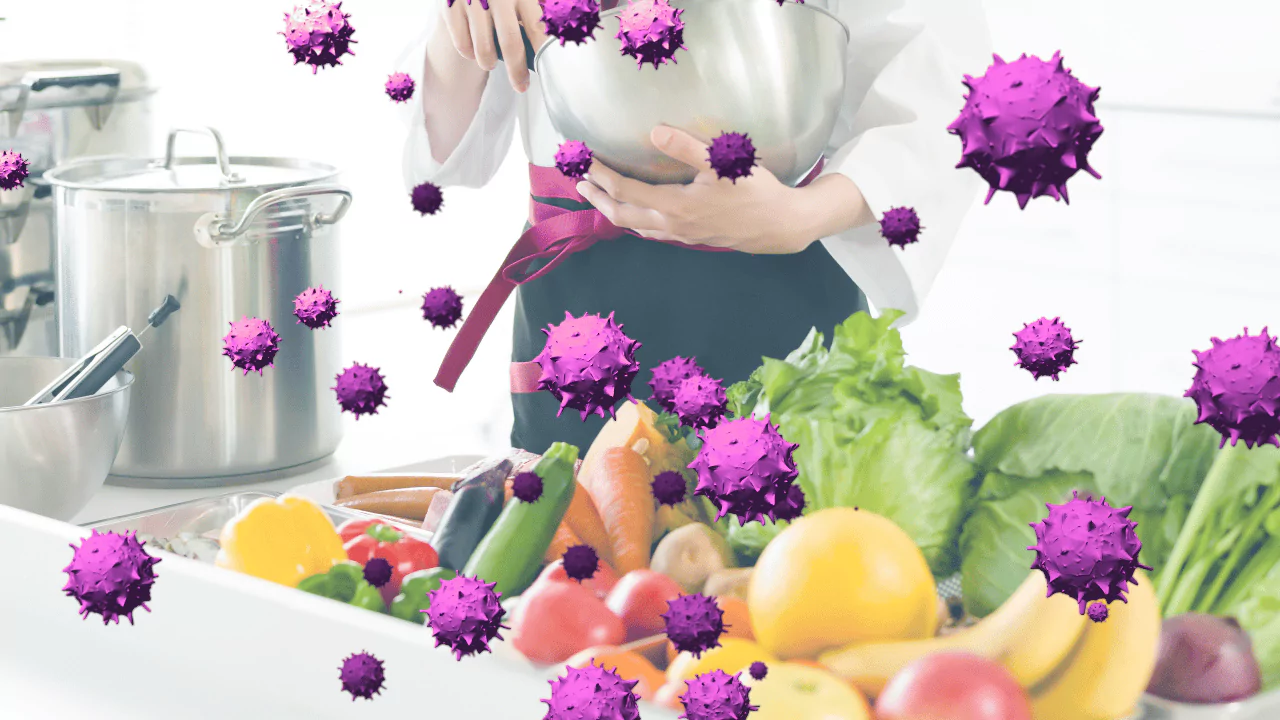Freezing food is a common way to preserve fruits, vegetables, meats, and prepared meals for longer-term storage.
However, some people wonder if freezing kills any viruses or bacteria that may be present in or on food. When it comes to food safety, viruses are a major concern.
The Effect of Freezing on Viruses in Food
Freezing food does not kill or inactivate most viruses. When food is frozen, the water present inside the food forms ice crystals. These crystals can damage bacterial cells by puncturing cell membranes. However, viruses do not contain cell membranes. They are simply bits of genetic material wrapped in a protein coat. Therefore, viral particles remain intact and viable when frozen.
When food is kept frozen, viruses essentially become dormant. The cold temperatures slow down or halt viral replication and activity. However, once food is thawed, viruses can become active and infectious again if they were present before freezing. Even though the viruses in frozen food are “asleep,” they still pose a potential risk of infection if ingested.
The main takeaway is that viruses in or on food do not die or become non-infectious when frozen. The risk of illness from viable viral particles is therefore not eliminated by the freezing process itself. Proper handling and preparation after thawing is crucial to minimize infection risk.
Food Safety and Frozen Produce
Outbreaks of foodborne viral illness have been associated with frozen fruits and vegetables. For example, hepatitis A and norovirus outbreaks have been traced to contaminated frozen strawberries and frozen pomegranate seeds.
Norovirus is extremely contagious and is the leading cause of foodborne illness. It spreads easily through contact with infected food, people, or surfaces. Freezing cannot inactivate norovirus particles.
Hepatitis A virus can also survive freezing. Contamination often occurs when food is harvested or handled by an infected person. Hepatitis A virus is stable and can persist in frozen produce for long periods.
The main issue is that viruses can be present internally within fruit or vegetable tissues. Freezing cannot destroy viruses hidden within intact plant structures. Proper processing like cooking is necessary to inactivate viruses prior to consumption of higher-risk produce.
Best Practices for Freezing Food to Minimize Virus Spread
To reduce the risk of illness, proper precautions should be taken when freezing food for later use:
- Carefully package and seal food in clean, labeled containers or freezer bags. Prevent cross-contamination between raw and cooked items.
- Quickly freeze items to a temperature of 0°F or below. Rapid freezing inhibits microbial growth during temperature drops.
- Monitor freezer temperature. Fluctuations can allow viral activity to restart.
- When thawing, keep foods refrigerated or cook immediately. Do not leave at room temperature.
- Wash hands and surfaces when preparing frozen produce like berries or leafy greens. Viruses may persist internally.
- Cook produce thoroughly before eating. Heating to an internal temperature of 165°F will inactivate viruses.
Following basic food safety practices from harvest to freezer to table minimizes the risk of illness from frozen food. Freezing alone does not make food virus-free.
Can You Get Sick from Eating Frozen Food with Viruses?
Yes, it is possible to get sick from eating frozen food contaminated with infectious viruses. Freezing preserves viruses rather than killing them. Consuming food with intact, viable viral particles can lead to illness.
However, the risk is low if safe handling, hygiene, and preparation steps are followed. While freezing cannot remove viral contamination, vigilant practices during harvesting, processing, freezing, thawing, and cooking keep frozen food safe to eat.
The keys are preventing the introduction of viruses via human handling and properly cooking higher-risk produce like berries. With appropriate precautions, frozen food remains a nutritious and convenient option for many households.



